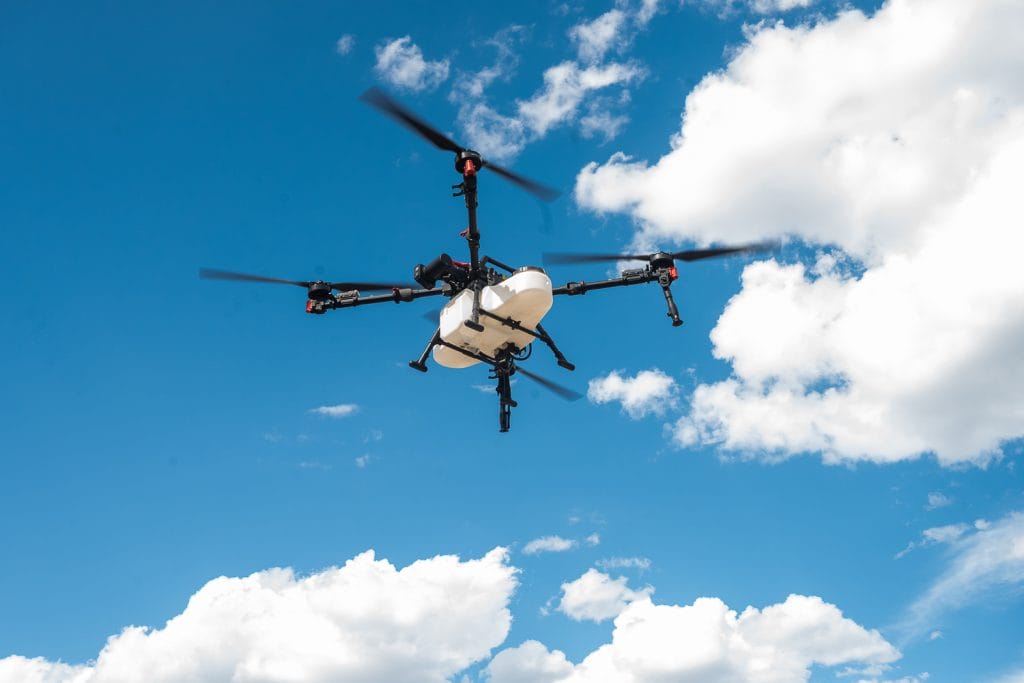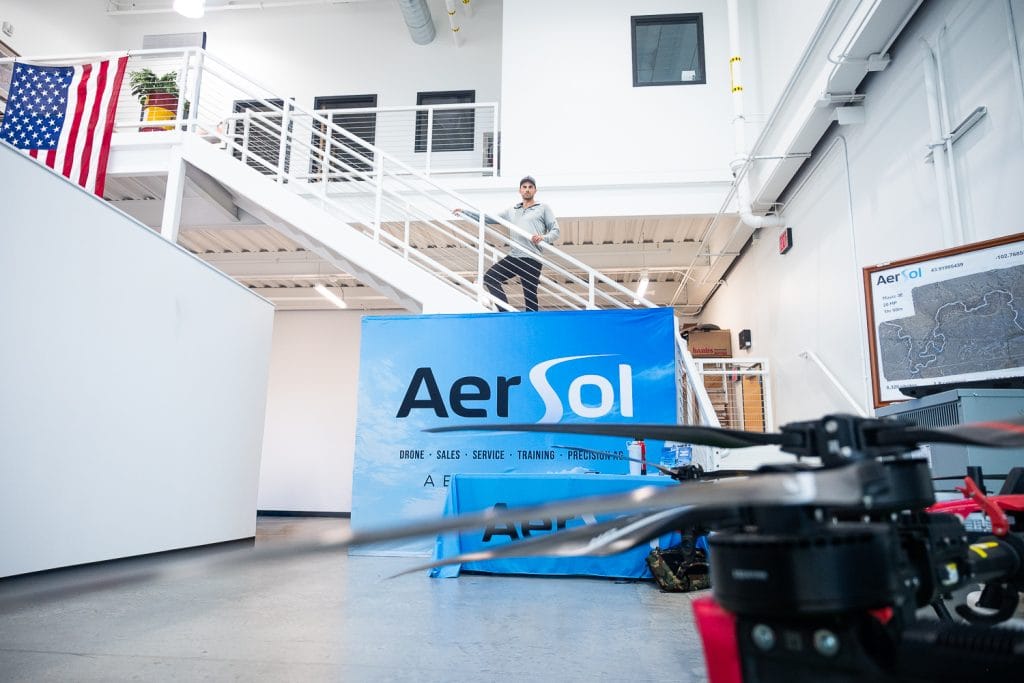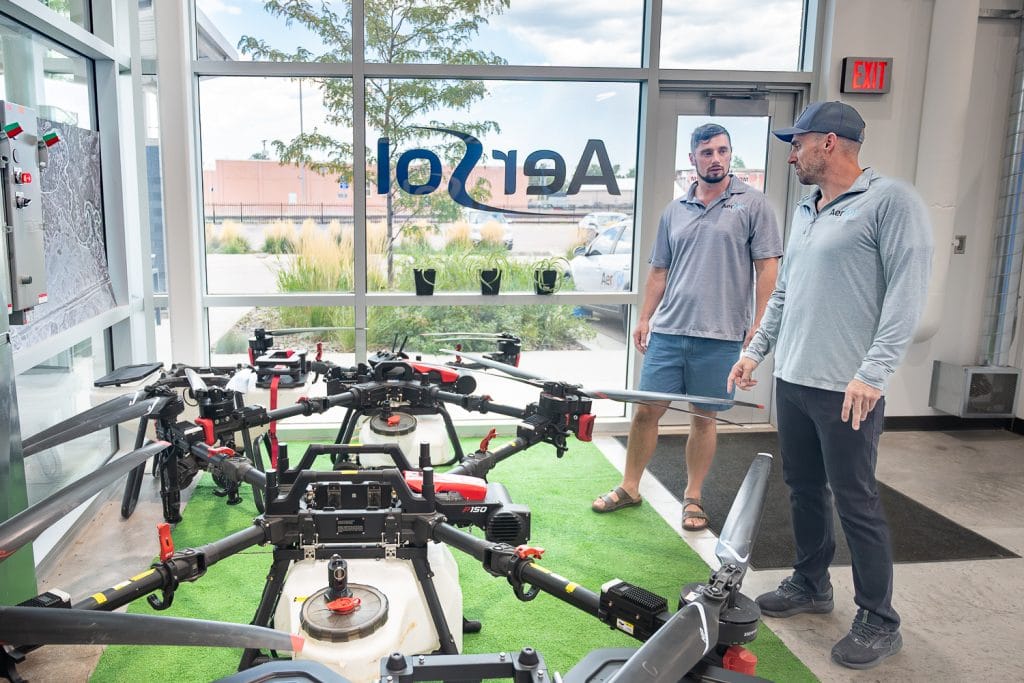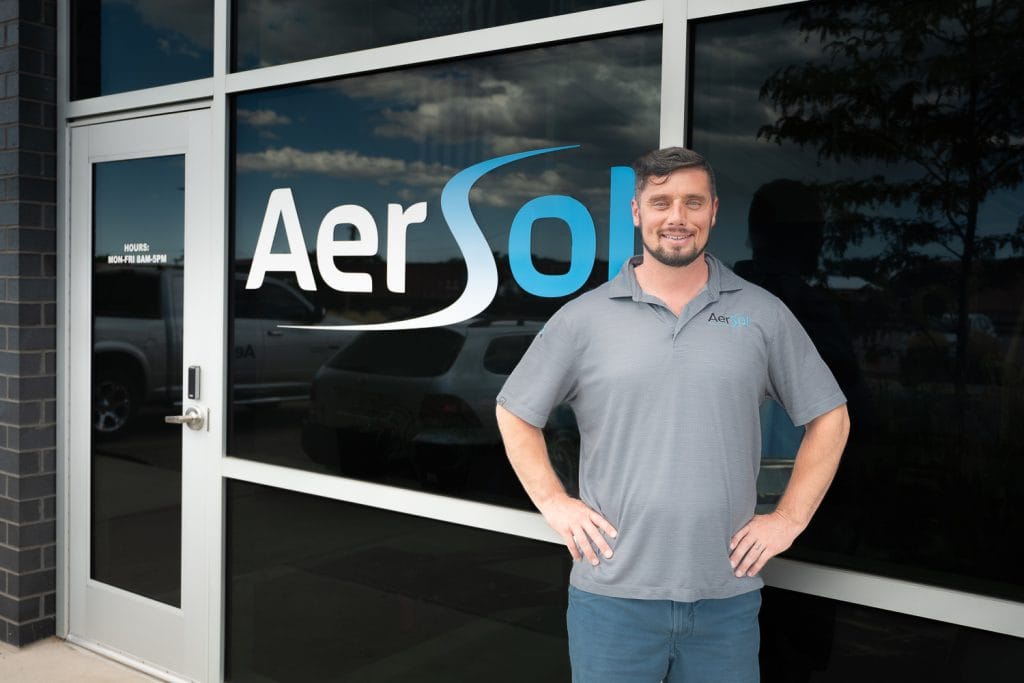By: Kory Lanphear
The famous Greek myth of Icarus and Daedalus warns of the perils of flying too near the sun. In reality, flying too close to the ground is far more dangerous. It is with this partially in mind that Managing Members Brandon Hatle and Tim Brown created AerSol, which deals in agriculture and surveying drones, drone repair, sales, and training.
“The name AerSol is short for ‘aerial solutions,’” says Brandon Hatle, 37, originally from the Piedmont area and a Sturgis Brown and Black Hills State graduate. “The idea was 10 years in the making. I was working for the power company cutting trees, and I saw opportunities to use herbicide, insecticides, and fungicides in the Black Hills, but there was really no spraying apparatus to be able to do what I was thinking could be done.”
Because of the Black Hills’ uneven terrain, it’s dangerous and imprecise to use traditional, manned aircraft for spraying. At the time, Brandon broached his general idea to a future, now former, member of AerSol, who suggested using drones. Brandon was intrigued. However, his initial research found that the technology was not quite advanced enough yet. Five years later, Brandon met future business partner, Rapid City Stevens and University of South Dakota graduate, Tim Brown. Tim, 36, was also interested in drones and brought a background in construction management to the table. However, they each turned to other endeavors for the time being.
“The stars aligned two years ago; that’s when we really started putting the fuel to the fire. Eighteen months ago, we officially launched as a company. Now, we’re just really trying to literally get this thing off the ground,” Brandon says.
Brandon likens the spray drone to the Swiss Army knife of spray tools. AerSol’s large commercial drone, about 10 feet in length, propeller to propeller, has multiple agricultural spraying applications. “Farmers or ranchers can use one drone to spray their whole operation — farm and hay ground, pastures, cattle, trees, you name it,” he says. “You program the drone, and it does the work for you. It could be spraying in the middle of the night, if you want. There are very few limitations other than wind, which is pretty standard for spraying.”
Smaller drones, similar in size to what a hobbyist might fly, are used for data collection in architecture, engineering, and construction, or AEC. These drones are armed with anything from a standard camera, to multi-spectral imaging for plant identification, thermal sensors to pick up heat patterns, or Light Detection and Ranging (LiDAR) technology to accurately assess elevations. “On a construction site, the drones collect centimeter-accurate data to tell if a building is in the right spot, how much dirt is in this pile or that pile, etc.,” says Tim. “Whether a project is commercial or residential, there’s no reason why you can’t have proof something was built a certain way. The drones are just another tool to help capture that data or monitor it.”
It was a primary objective for Brandon and Tim to be first to market in the area and try to help usher in an era of new practical technology for businesses still operating in traditional ways. Their approach is to begin as a service provider and gradually transition into sales, with the ultimate goal of customers purchasing drones to operate for their own business needs. AerSol can help facilitate training, licensing, and software implementation.
“I feel like we’re coming in at a very good time, but a very difficult time,” says Brandon. “The business space now looks completely different than it did a year ago. Unfortunately, pretty much all the drone technology comes from China. Many of those drones are no longer allowed into the states. It’s been interesting to navigate that to say the least. We’ve just got to keep failing forward.”
In the next five years, AerSol would like to help put 100–200 spray drones in the skies around a 300–400-mile radius of Rapid City.
“My vision is to be all things drones for this region and to help implement them into tons of industries, not just construction, not just agriculture,” says Tim. “We want to help teach the region how to use this tool and how it fits into their operation.”




This story was originally published in the October 2025 issue of Elevate Magazine.


